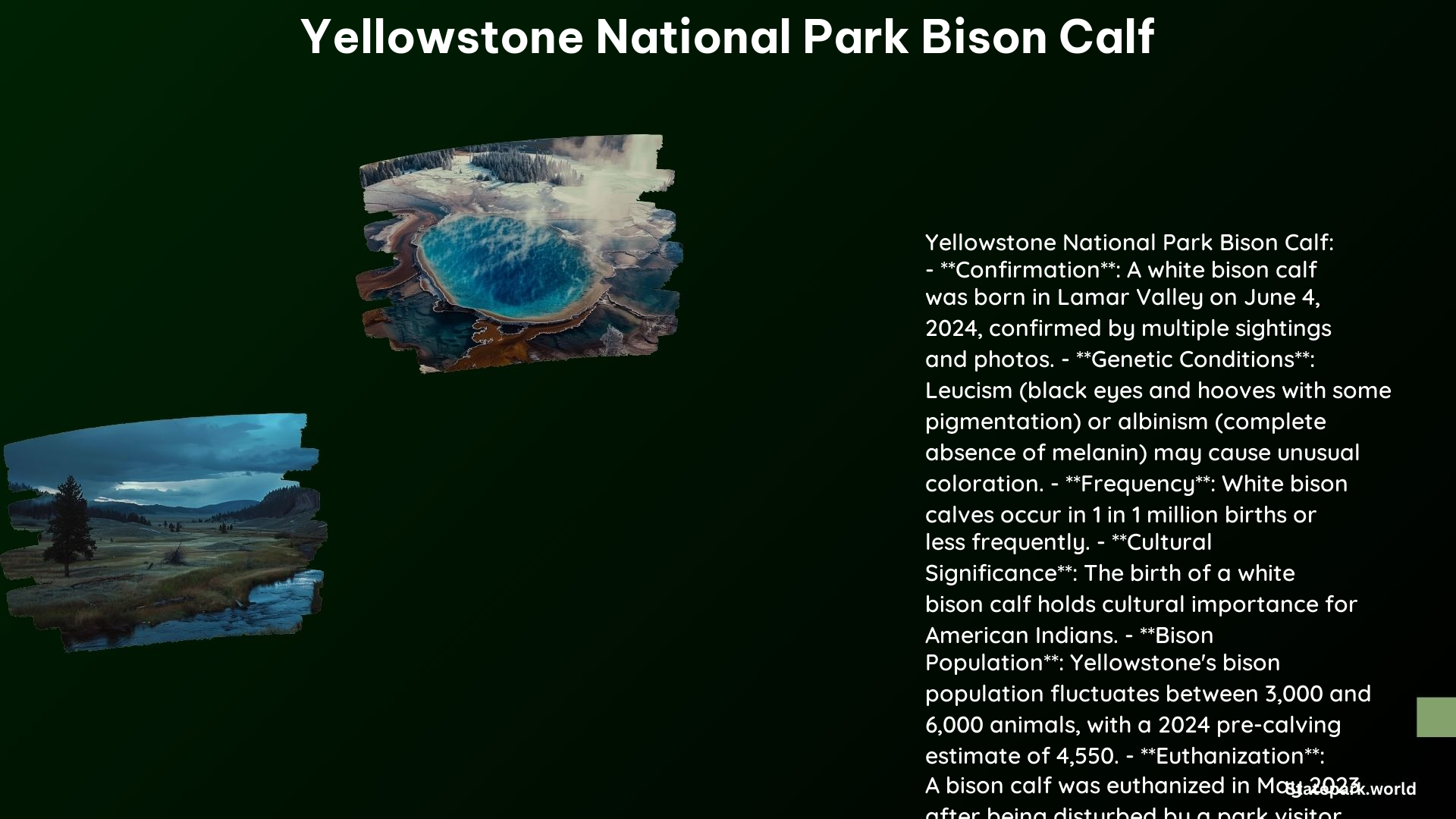Yellowstone National Park is home to one of the last remaining wild bison herds in the United States, and the birth of a bison calf is always a remarkable event. From the euthanization of a newborn calf to the rare sighting of a leucistic white calf, the park’s bison population has been the subject of intense interest and conservation efforts.
The Euthanization of a Bison Calf
In May 2023, a tragic incident occurred in Yellowstone National Park when a newborn bison calf was euthanized after a park visitor touched it, causing it to be rejected by its herd. This incident highlights the importance of respecting wildlife and maintaining a safe distance from them. Park officials emphasize that visitors should never approach or touch wild animals, as it can have severe consequences for the animal’s well-being.
The Rare White Bison Calf

In June 2024, an even more remarkable event took place in Yellowstone National Park – the birth of a rare white bison calf. This leucistic calf, with its black eyes and hooves and some pigmentation, is believed to occur only once in every 1 million births. The birth of such a calf holds cultural significance for many American Indian tribes, who view it as a sacred and auspicious event.
Yellowstone’s Bison Population
Yellowstone National Park is home to two distinct bison herds that breed in the Lamar Valley and Hayden Valley. The park’s bison population fluctuates between 3,000 and 6,000 animals, with the 2024 pre-calving population estimated at around 4,550. The park’s wildlife management team conducts annual counts to monitor the herd’s health and population dynamics.
Bison Management in Yellowstone
Yellowstone National Park has a quarantine facility where bison can undergo testing for brucellosis, a disease that can be transmitted to livestock. If the bison test negative, they can be used to start conservation herds elsewhere. However, this process is not suitable for newborn, abandoned calves, as they require specialized care and attention.
Protecting Yellowstone’s Wildlife
The park strictly enforces a 25-yard distance rule between visitors and bison herds to maintain visitor safety and prevent human interference with wildlife. This rule is in place to ensure that the bison can thrive in their natural habitat without being disturbed by human activity.
Genetic Conditions in Bison
Leucism and albinism are genetic conditions that can cause unusual coloration in bison. Leucistic animals lack cells producing melatonin, resulting in white or partially white bodies, while albino animals completely lack melatonin, leading to near-total whiteness and impaired vision. The birth of a white bison calf is a rare and remarkable event that reflects the successful recovery of Yellowstone’s wild bison population.
Conclusion
The birth of a bison calf in Yellowstone National Park is always a captivating event, and the recent incidents involving a newborn calf and a rare white calf have highlighted the importance of wildlife conservation and respect for the park’s natural wonders. As visitors continue to explore Yellowstone, it is crucial that they follow the park’s guidelines and maintain a safe distance from the bison herds, allowing these majestic animals to thrive in their natural habitat.
Reference:
- https://www.nps.gov/yell/learn/nature/bisoncalf.htm
- https://www.npr.org/2023/05/24/1177857710/bison-calf-yellowstone-man
- https://apnews.com/article/while-bison-calf-yellowstone-buffalo-b080161a694e505334caac0ba81482d9
